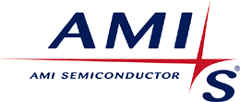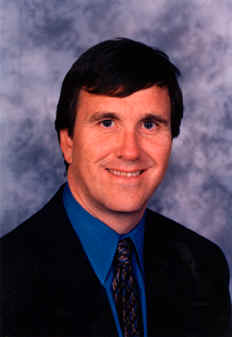|
|
AMIS Holdings Inc. (AMIS) |
|
|
CEOCFO
Interview Index |
This is a printer friendly page! AMIS
provides customers in the automotive, medical and industrial markets with optimal value,
quickest time-to-market semiconductor solutions BIO: CEOCFOinterviews: Mr. Henry, will you tell us about AMI and the types of services you provide? Mr. Henry: “We are a custom analog and mixed-signal company. A little more than half of our revenue comes from custom analog and mixed-signal products. Roughly 20 – 25% of our revenue comes from mixed-signal foundry services where our customer will provide us their IP and we will manufacture their products for them and then sell them. We will also arrange for complete packaging and testing and then we will ship them those finished products. The other 20-25% of our revenue comes from structured digital products; this is a legacy business where we are the leader in FPGA replacement technology. We will take an FPGA from a company like Altera or Xilinx replicate all the good things and all the bad things about it into more of a structured ASIC. By doing so, we can provide a sixty to ninety percent cost advantage to our customers depending upon how complex the FPGA is.” CEOCFOinterviews: Do you foresee the mix changing percentage wise and how do you make that happen? Mr. Henry: “I think we would certainly like to do a little less foundry business and a little more in the way of the mixed-signal and structured digital because that would help improve our mix. We will help this to happen by continuing to work with our customers and increase our design wins in our analog and mixed-signal products and our structured digital products. We have a natural decline in our foundry business and we have a relationship with STMicroelectronics that was established at the time AMI bought the Mixed-Signal Business of Alcatel Microelectronics. It is a three-way deal where STMicroelectronics bought the Alcatel business, and then AMI bought the mixed-signal portion of that business from ST. As part of that, we entered into take-or-pay arrangement with ST, which expired in June of this year. They have met their take-or-pay commitment and we are expecting that the ST business is going to go down a bit in the second half of this year from a run rate of about twelve million dollars a quarter in the fourth quarter of last year, down to about three million dollars a quarter in the second half of this year.” CEOCFOinterviews: If you have less in your foundry business, do you have physical equipment facilities that become unnecessary? Mr. Henry: “No, we are expecting our utilization to remain strong. Our mixed-signal business is doing well and we anticipate that we will be able to back-fill any capacity. We have also entered into more of a strategic relationship with Intersil and are doing more of their power management products. It is an expansion of an already existing foundry relationship with Intersil.” CEOCFOinterviews: In which markets do you focus? Mr. Henry: “We focus primarily on the automotive, medical and industrial markets. In the automotive business, we are on a run rate to do about a hundred million dollars per year. We primarily focus on the mission-critical parts of the car such as headlight control, electronics and those types of things. We have roughly a 13% market share in automotive products and we sell to many of the top automotive systems customers such as DELPHI and BOSCH. From a medical standpoint, this is a strategic business going forward. We are the leader in providing medical semiconductor products in the industry. We have about a 19% market share. Margins and medical products run from 60-65% above our average. We service many of the top medical electronic companies like MEDTRONIC, GUIDANT, ST. JUDE, ABBOTT LABS. We are on a run rate to do sixty million dollars this year in medical. In the first quarter, that was 34% year-over-year growth. The things we focus on are implantable devices like implantable glucose meters. Also in the area of diagnostics are things such as MRI or Ultrasound. On the consumer side are things such as hand-held glucose meters. In the industrial space, it is roughly at or above our gross margins, about 50-55%, a 110 million dollar annual run rate selling into the industrial market. In the first quarter, it was our highest growing market segment where we had thirteen percent sequential growth. We service a broad range of industrial applications; everything from white goods to circuit breakers and factory automation. We have twelve percent market share in industrial and the customers that we serve are TYCO for security systems, SCHNEIDER and SYMBOL for bar code reading electronics. Those are our top three markets and then we serve our communications market through our structured digital product line and most of that is geared toward providing FPGA replacement products that go into communications and some military applications. We believe we have a 17% market share in the FPGA conversion market. This is an interesting product line because when we enter into design wins, most of them turn into revenue because we are getting designs on products that are already in the market and are in systems today. The money that we spend we intend to get back.” CEOCFOinterviews: I see from your corporate description that you are for “unparalleled manufacturing flexibility and dedication to customer service.” What does that mean for AMI? Mr. Henry: “Many semiconductor companies that are standard products companies are focused on very large production runs on products and that is how their factories are organized. Our factories are organized toward shorter production runs, and we can be more flexible with our customers. Our factories are more flexible than you will find in a typical large company in the analog and mixed-signal space. That flexibility requires a competency that is not prevalent in terms of manufacturing in our industry. I think we are unique in that regard and our customers appreciate that. Because we sell into markets such as medical, industrial and automotive, our product life cycles are long and our customers want to have long-term support from us. A standard products company may not be tolerant of that and particularly of being flexible at the same time. That is what we believe is a key value proposition for AMI and something that our customers appreciate.” CEOCFOinterviews: What is the competitive landscape and why are people choosing AMI? Mr. Henry: “One of the things you need to know about AMI is that we are unique in the semiconductor space, especially in the analog mixed-signal space. Much of our focus is on providing custom analog solutions; more of an ASIC if you will, as opposed to a standard product. When we enter into a relationship with our customers, it is more of a partnership. Ninety-five percent of what we sell is custom products for our customers and eighty-five percent of our revenues come from sole-source products. We develop core customer relationships. We do not generally sell our products through distribution; most of our products are going directly to our customers and we work closely with them. In many cases, our customers are making investments in non-recurring engineering fees with us and then partnering with us and when these products go into production, they stay in production for a long time. That combination of long customer relationships combined with dedicated manufacturing, which supports these production runs that can vary in size and complexity, makes us unique.” CEOCFOinterviews: Rockwell Collins named AMI Commodity Supplier of the Year; will you tell us about that? Mr. Henry: “I think it is another example of how our customers value our quality and service and our willingness to work with our customers. That is one of our value propositions and we strive hard to gain the confidence and recognition from our customers. We also have other awards for customers such as Guidant and AUTOXRAY, where they will give us an appreciations award and a supplier leadership award. Part of our value proposition is to focus on quality and providing good customer service. We are focused on maintaining long and fruitful relationships with our customers.” CEOCFOinterviews: You have customers worldwide and offices in Europe. Are there other geographic areas where you would like to focus? Mr. Henry: “We would like to be more active in Asia. We are successful there now with the infrastructure that we have. We have roughly 18% of our revenue coming out of Asia and we are doing that with a minimal sales force presence.” CEOCFOinterviews: What do you see ahead in terms of growth where is it coming from and how do you intend to make it happen? Mr. Henry: “As we look in the short-term in the second half of the year, we believe that our growth is going to come from our structured digital product line. We see some good business coming along with our XPressArray™ products. That is going to offset some of the weakness that we have talked about to Wall Street. It will come from our foundry business, with the ST business going away. We are certainly always looking for acquisitions but we will not just buy anything. When we look at acquisitions, we will look at ones that expand our market share or our customer base. We want them to be accretive so we are selective in what we acquire. We talked about geographic expansion; we would like to generate more business in Asia. We gave a very solid IP portfolio and things such as low-data wireless for medical and CAN protocol for automotive. We are an excellent analog mixed-signal foundry for the customers that require that and we are one of the few that offer that service. We are looking to expand those relationships with companies like Intersil. We are up to increasing our penetration with existing customers that we have. I think we have a good strategy but one thing to note about AMI is that our business model is not predicated on rocket-ship growth, we are going to be more of a steady growth company. We will grow in the upturns and in the downturns. We show investors a chart of how we compare against the semiconductor industry and in the past cycle of 2000, we did not fall as far as other companies in our space because we are not exposed to the cycles as other companies are, who focus on consumer, communications and the computing side of the market. On the other hand, when you look past 2000, we actually outgrew the semiconductor industry. We look at the period from 1999-2001 and AMI recovered in 2001 where our revenue level was in 1999; it took the rest of the industry until 2003 to do that. We are a unique company and we deal with custom analog solutions. We will be a steady growth company.” CEOCFOinterviews: Why is this a good time for investors to be interested and what should they know that they might not realize when they first look at the company? Mr. Henry: “One of the things investors need to know is that we are a growth company. I think the perception of us in the market that we are a defensive company. In the semiconductor space we are the company to own when the market is slowing down. If you look at our stock price in relation to our analog peers, our stock price is actually holding up very well. I think that is reflective of the view that we are more of a defensive stock and not a growth stock. As long as people believe the downturn is coming then I guess I would tell people that AMI is a steady growth company and it is going to perform in the downturn.” disclaimers |
|
To view Releases highlight & left click on the company name!
|
|





